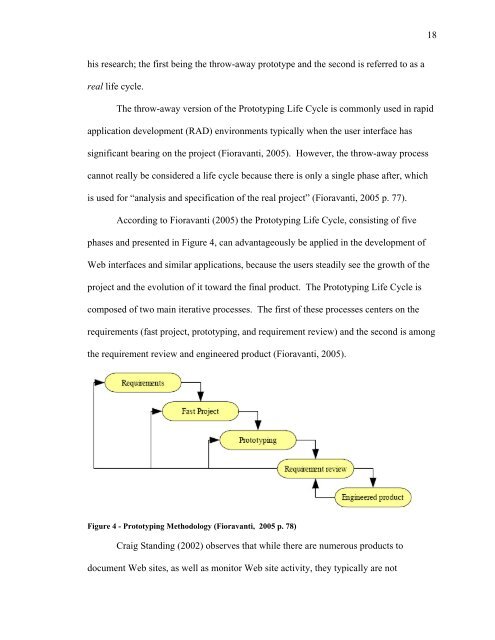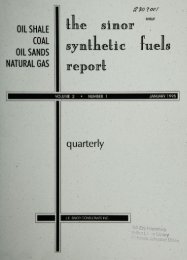Disclaimer - Alliance Digital Repository
Disclaimer - Alliance Digital Repository
Disclaimer - Alliance Digital Repository
You also want an ePaper? Increase the reach of your titles
YUMPU automatically turns print PDFs into web optimized ePapers that Google loves.
18<br />
his research; the first being the throw-away prototype and the second is referred to as a<br />
real life cycle.<br />
The throw-away version of the Prototyping Life Cycle is commonly used in rapid<br />
application development (RAD) environments typically when the user interface has<br />
significant bearing on the project (Fioravanti, 2005). However, the throw-away process<br />
cannot really be considered a life cycle because there is only a single phase after, which<br />
is used for “analysis and specification of the real project” (Fioravanti, 2005 p. 77).<br />
According to Fioravanti (2005) the Prototyping Life Cycle, consisting of five<br />
phases and presented in Figure 4, can advantageously be applied in the development of<br />
Web interfaces and similar applications, because the users steadily see the growth of the<br />
project and the evolution of it toward the final product. The Prototyping Life Cycle is<br />
composed of two main iterative processes. The first of these processes centers on the<br />
requirements (fast project, prototyping, and requirement review) and the second is among<br />
the requirement review and engineered product (Fioravanti, 2005).<br />
Figure 4 - Prototyping Methodology (Fioravanti, 2005 p. 78)<br />
Craig Standing (2002) observes that while there are numerous products to<br />
document Web sites, as well as monitor Web site activity, they typically are not















![pace SrntfletIc fne]its report - Alliance Digital Repository](https://img.yumpu.com/10493335/1/190x245/pace-srntfletic-fneits-report-alliance-digital-repository.jpg?quality=85)
